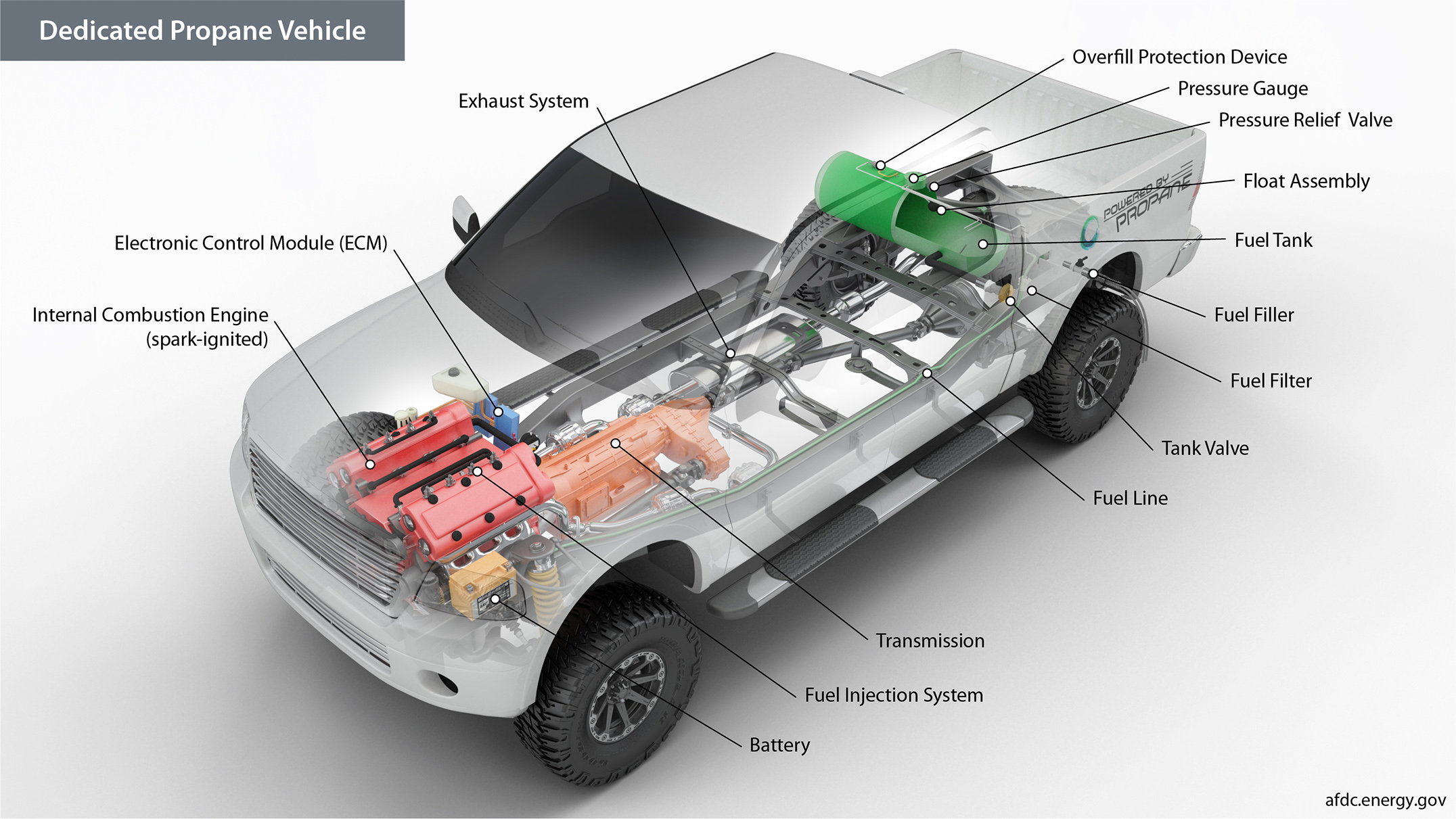How Do Propane Vehicles Work?
Propane vehicles operate much like gasoline vehicles with spark-ignited internal combustion engines. There are two types of propane fuel-injection systems available: vapor and liquid injection. In both types, propane is stored as a liquid in a relatively low-pressure tank, usually at the rear of the vehicle. In vapor-injected systems, liquid propane travels along a fuel line into the engine compartment where it is converted to a vapor by a regulator or vaporizer. Liquid propane injection engines do not vaporize the propane until it has exited the fuel injector, which allows for more precise control of the fuel delivery and results in improved engine performance and efficiency. Learn more about propane vehicles.
Key Components of a Propane Vehicle
Battery: The battery provides electricity to start the engine and power vehicle electronics/accessories.
Electronic control module (ECM): The ECM controls the fuel mixture, ignition timing, and emissions system; monitors the operation of the vehicle; safeguards the engine from abuse; and detects and troubleshoots problems.
Exhaust system: The exhaust system channels the exhaust gases from the engine out through the tailpipe. A three-way catalyst is designed to reduce engine-out emissions within the exhaust system.
Float assembly: The float assembly monitors the fuel level in a tank.
Fuel filler: A nozzle from a fuel dispenser attaches to the receptacle on the vehicle to fill the tank.
Fuel filter: This filter traps contaminants and other byproducts to prevent them from clogging critical fuel system components, such as fuel injectors.
Fuel injection system: This system introduces fuel into the engine's combustion chambers for ignition.
Fuel line: A metal tube or flexible hose (or a combination of these) transfers fuel from the tank to the engine's fuel injection system.
Fuel tank (propane): This tank stores propane on board the vehicle until it's needed by the engine.
Internal combustion engine (spark-ignited): In this configuration, fuel is injected into either the intake manifold or the combustion chamber, where it is combined with air, and the air/fuel mixture is ignited by the spark from a spark plug.
Overfill protection device: This device shuts off the flow of fuel into a fuel tank after 80% capacity has been reached.
Pressure gauge: This gauge measures and displays the fuel pressure within the tank.
Pressure relief valve: This device incorporates a valve to limit the pressure within the fuel tank. If the tank exceeds a preset pressure level, the valve opens and fuel is vented from the tank.
Tank valve: This primary, manual valve stops fuel from entering or leaving the tank.
Transmission: The transmission transfers mechanical power from the engine and/or electric traction motor to drive the wheels.
